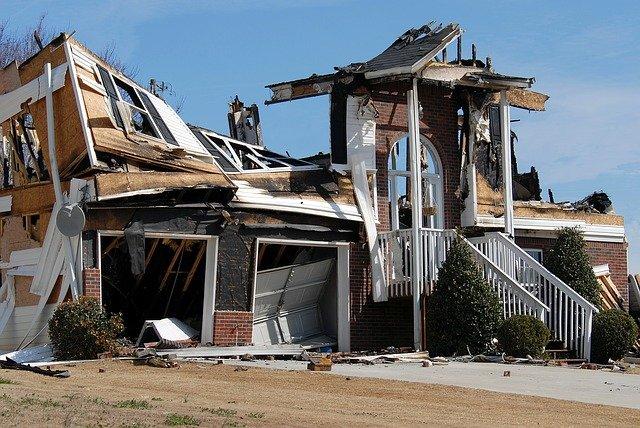
No doubt, the quality of a building begins from its design.
Before a building is erected, there has to be a detailed design in the form of a drawing, which will guide the builders in the building process.
This design comes in different drawings, each having its purpose. Below are the types of drawings needed for your building design.
Sketches

Image credit: dreamstime.com
A sketch is a freehand drawing of a building, with no aim of getting precise dimensions. Sketches are usually a quick representation of an architect’s imagination.
It’s mostly used whenever the architect isn’t prepared to do a precise drawing but, by chance, gets an idea that needs to be documented.
He may use a plain sheet and any writing material to make some sketches. Later on, he would make the drawings polished and ready for use by the builders.
Sketches are also used to let the architect have a pictorial glimpse of how his idea will turn out if he should go by it. However, the information on a freehand sketch is for the consumption of the drawer only. Any attempt by the builder to work with it may result in errors in construction.
Detailed Drawing
A detailed drawing appears to be a sharp contrast of sketches. Detailed drawings are usually large-scale drawings that contain all the geometric information of a part or component of a building.
They may be drawn by hand or using a Computer Aided Design (CAD). The drawing is a two-dimensional orthogonal projection showing the sections, elevation, and plans of the building. However, Building Information Modeling (BIM) is now used to design three-dimensional models of buildings and their components.
A detailed drawing is clearly different from a ‘detailed design drawing’ and a ‘working drawing.’
Detailed designed drawings are usually coordinated, dimensionally correct, and describe the main components of a building and its interconnectedness.
Working drawings, on the other hand, provide properly dimensioned and graphical information that will guide builders in building, and suppliers in fabricating the needed components for work.
Component Drawing
Represented by the letter ‘C’, a component drawing provides comprehensive information about the individual unit or component of a building such as doors and window beams. It can easily be re-used if the component is a commonly used one.
Components of a building are parts of a building that are manufactured separately and can be joined with other elements to form a complex item in a process known as ‘assembly.’ A drawing of the assembly of components can be referred to as an Assembly drawing.
Component drawings are done in such a way that they don’t include duplicate information in other types of drawing of the same building. They may provide information about the material and quality of the component that will be needed to erect a standard building. The drawings can be drawn to a scale of 1:2, 1:1, 1:5, and so on.
Design Drawing
When a design drawing is still in the beginning stage, it can be used as a form of conviction to prove to a client that the designer can handle the design of the building.
It’s usually a comprehensive drawing that is transformed from the initial stage of just sketches to a very detailed drawing containing every component that will make the building a success.
The size, scale, content, and format of a design drawing are determined by the purpose of the design plan. Every design drawing has its purpose, intended information, and target.
An application of such use is when a client that is new to building construction requests for a design drawing of his intended building. The drawing should just be clear and simple. But if a supplier in the construction site requires it, then it has to be well-detailed.
The design drawing can be prepared by a team made of people from different areas of building and technology such as building service engineers, structural engineers, civil engineers, and architects. When these drawings have been made by these professionals, a lead designer is then appointed to assemble the drawings and make sure they fit the overall design.
The design drawing can be made using CAD or BIM, which is friendlier as it allows the whole design team to collaborate and work on an integrated information model.
Uses of a Design Drawing
- It keeps a record of changes made until the construction is complete
- The drawing is used to assess the options of potential sites
- It can be submitted to the relevant government agency overseeing building constructions for approval
- It can be used to develop raw ideas into a finely detailed plan
Electrical Drawing

This is a type of drawing that helps to visualize the electrical wirings and circuits intended for a building. The drawing will guide the electricians on the installation of electrical fittings on the building. Other workers on-site may also need it to prevent them from unknowingly interfering in the electrical design of the building.
Features of an Electrical Drawing
The drawing shows:
- The external wiring of a building
- The kind of connections to be done and the layout of the circuits
- How electrical fixtures will be connected to the whole electrical system
- Ratings, size, capacity, and voltage of power entering the building
- Circuit breakers and switches to be used in the building
- The load of electrical and electronic components such as air conditioners, heaters, and batteries to be attached to the building
Elevation Drawing
It is a two-dimensional orthographic projection of the building showing the exterior, interior, and sides of a building. It is characterized by projection lines that are perpendicular to a projection plane. The drawing simply shows all the parts of a building when viewing from one of its sides.
It has always been done by hand until recent times when CAD and BIM became the preferred tools for such drawings.
Features of an Elevation Drawing
This drawing reveals:
- The exterior features of a building; may include the balconies and stairs
- Exterior dimensions of a building such as the height and width
- The openings of a building such as the windows and doors
- Projections on the building like chimneys, pipes, and so on
- The outline and geometry of a building and its roof
Uses of an Elevation Drawing
- It can be submitted to the building regulatory agencies for approval to carry out constructions
- The drawing is used to pass information to all workers on a construction site
- It can be kept for record sake
Floor Drawing
This is also an orthographic projection that shows the floor design of a building. By this, it reveals the sizes of the rooms and other compartments of the building. The drawing is useful to almost all the workers that will be involved on a construction site.
With scales between 1:200 and 1:20, it uses different colors and lines to reveal lots of information about an intended building. This information may include sizes of compartments, openings leading to compartments, and fixtures to be attached.
However, different floor drawings may be made to split too much information that may not be contained in a single drawing.
When drawing the floor design, block letters should be used to indicate rooms; arrows should be used to indicate the direction of stairs; correct symbols for plumbing fittings should be inscribed; and electrical switches, circuit breakers, and appliances should be indicated.
Site Plan
Site plans reveal the whole space that will be used up in the course of the building. Usually using scales as large as 1:500, a site plan consists of information that depends on the magnitude of the project.
Information to be included on a Site Plan
- The layout of the fences and gates
- The plan of the drainage, water tanks, electricity source, and so on
- Structures and obstacles to be demolished
- Vehicular and human movement path in and out of the building
- Relaxation or recreational spots
- Aerial lighting plan for the building
- Trees, gardens, and natural aesthetics that may be included
- Boundaries and dimensions of the site
Section Drawing

Image credit: inhabitat.com
The section drawing can be imagined as a view of a building when it has been cut through an imaginary vertical (or horizontal) plane. It is used to reveal information about an intended building that can’t be represented on a plan or elevation drawing.
The direction of the plane is usually represented by a combination of long and short dashes; the part of the building that has been sliced through is represented by shading or cross-hatching.
Different components of a sectioned building require different types of cross-hatching. There is a standard for applying this technique when designing a building.
The scale of this type of drawing is dependent on the size of the building and the amount of information that needs to be revealed. It’s similar to an assembly drawing, only that it reveals necessary details that cannot be captured on an elevation drawing and not the assembly process of components.







Leave a comment
This site is protected by hCaptcha and the hCaptcha Privacy Policy and Terms of Service apply.